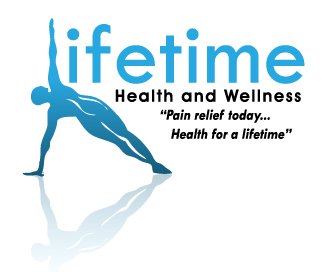Most of us experience the occasional headache. Whether it’s throbbing, aching, pounding or stabbing, a head-ache can make our lives miserable. It also affects our ability to focus and may increase our sensitivity to external stimuli.
There are several types of headaches, and each one has a different cause. The most common headaches are tension, migraine, cervicogenic and cluster. Migraines are often considered to exist in a category of their own. (We’ll discuss migraines in the next issue of Topic of the Week.)
Tension Headache
The tension headache is the most frequent type of headache in the general population.1 It usually occurs most frequently in people susceptible to the effects of stress. This headache usually starts with tightness in the neck and shoulders, then progresses to pain at the base of the skull. The forehead and temples may also ache.
Cervicogenic Headache
A cervicogenic headache originates from disorders of the neck. This type of headache is often preceded by awkward neck movement or position-ing (such as painting a ceiling, or washing a floor). It’s usually accom-panied by restricted range of motion in the neck and pain in the shoulder, neck or arm.
Treatment for Tension and Cervicogenic Headaches
A frequent cause of both tension and cervicogenic headaches is irrita-tion of the nerves leading to the scalp. These nerves exit the spine close to the base of the skull and pass around or directly through several layers of muscle tissue. If this area of the spine is restricted or the muscles in this location are extra tight, the nerves in the scalp can get irritated. When related with neck pain and stiffness, these headaches can generally be effectively treated with chiropractic.2- 5 Sometimes the relief from chronic headaches can be immediate and dramatic.6
Massage and trigger point therapy applied to the tight muscles may also reduce the symptoms associated with this type of headache.
Cluster Headache
Cluster headaches are relatively rare, affecting only 0.1% of the population. About 85% of cluster headache sufferers are male.7This headache is distinct from migraine and tension headaches. It typically features intense bouts of stabbing pain felt in very specific focal areas of the skull. The pain usually occurs in clusters, and it can last from minutes to hours. The discomfort typically centers around one eye, and this eye may be inflamed and watery. Nasal congestion sometimes occurs on the affected side of the face. It’s suspected that cluster headaches are related to the sinuses. This type of headache is not usually as responsive to chiropractic treatments as other headaches. But it’s a good idea to have your chiropractor check your neck to rule out any involvement of this area.
What Can I Do to Prevent Headaches?
Follow these simple tips: Manage your stress – try meditation, relaxation exercises and taking regular breaks from your schedule. Exercise regularly – cardiovascular exercise helps your muscles, circulatory system and sense of well being.Watch your posture – the muscles that hold your head upright are the same as those that contribute to headaches. Practice good posture to reduce stress on these muscles. Drink plenty of fresh water, dehydration is a common cause of headaches, muscle tightness and fatigue. Drink a minimum of eight cups per day.Have your spine checked regularly for misalignment/subluxations by your South Elgin chiropractor, DR Tim Schening – correcting misalignment before symptoms appear can save you a lot of grief.
References and Sources:
1. Loder E & Rizzoli P. Clinical Review:Tension-type headache. BMJ 2008; 336: 88-92.2. McCrory DC, Penzien DB,HasselbladV & Gray RN. Evidence Report: Behavioral and Physical Treatments for Tension-type and Cervicogenic Headache.Duke University Evidence-basedPractice Center, Center for ClinicalHealth Policy Research. Durham NC.3. Bronfort G, Assendelft WJ, Evans R, Haas M & Bouter L. Efficacy of spinal manipulation for chronic headache: a systematic review. J Manipulative Physiol Ther. 2001; 24(7): 457-466.4. Haas M, Groupp E, Aickin M, Fairweather A, Ganger B, Attwood M, Cummins C & Baffes L. Dose response for chiropractic care of chronic cervicogenic headache and associated neck pain: a randomized pilot study. J Manip Physiol Ther. 2004; 27(9): 547-553.5. Nilsson N, Christensen HW & Hartvigsen J. The effect of spinal manipulation in the treatment of cervicogenic headache. J Manip Physiol Ther. 1997; 20(5): 326-330.6. Lisi AJ & Dabrowski Y. ChiropracticSpinal Manipulation for CervicogenicHeadache in an 8-Year-Old.J Neuro – musculoskeletal System 2002; 10(3): 98–103.7. Fischera M, Marziniak M, Gralow I & Evers S. The incidence and prevalence of cluster headache: a meta-analysis of population-based studies.Cephalgia. 2008; 28(6): 614 – 618.
